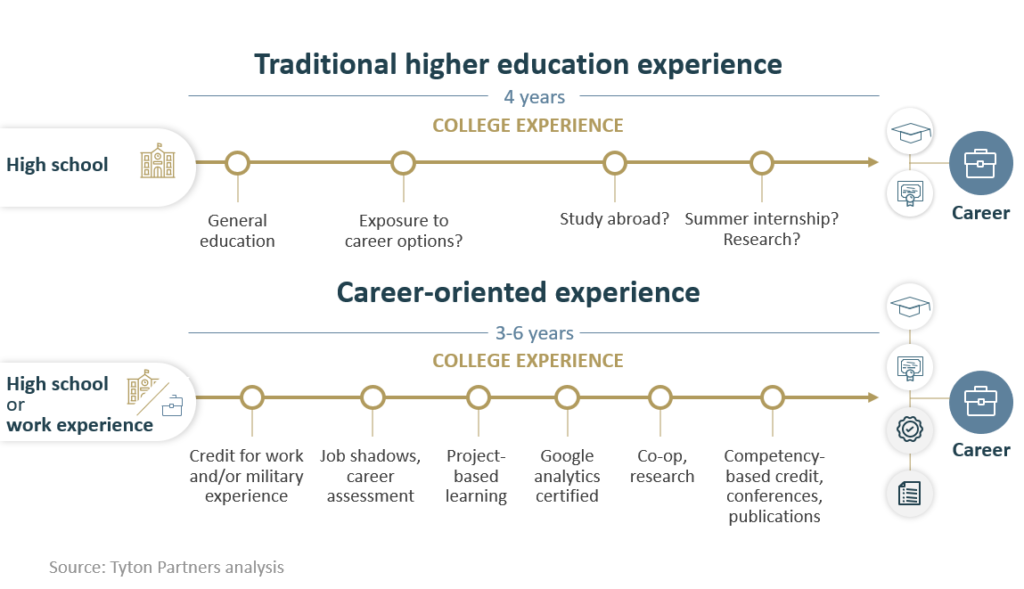Catalytic Capital: From Recognition to Action in Education-to-Workforce Investing
July 8, 2025 BlogThe education-to-workforce pipeline is under pressure – and changing fast. The World Economic Forum notes that employers around…

Not coincidentally, policymakers, politicians, and the media have begun to use the College Scorecard and other newly available government data sources to judge programs based on their labor market ROI and economic mobility score, with calls to crack down on those programs that fail to produce an adequate return for the cost of attendance. This growing attention is further fueled by an even greater societal focus on issues of equity, as students from historically under-represented backgrounds seek to have the same access to and outcomes from post-graduate employment opportunities.
Given these dynamics, building new—and distinctive—models to career alignment is an imperative for most institutions.

There are models for improved career engagement for every type of school and every type of student. For many institutions, cracking the code on this challenge can become a point of meaningful market differentiation and enrollment growth. For others, it can be a difference maker in attracting a more diverse student body.
Trace URdan